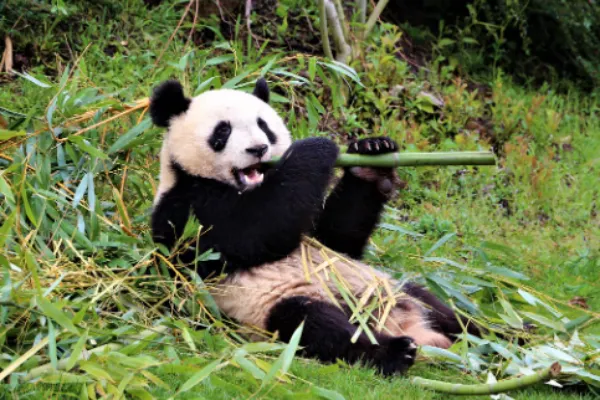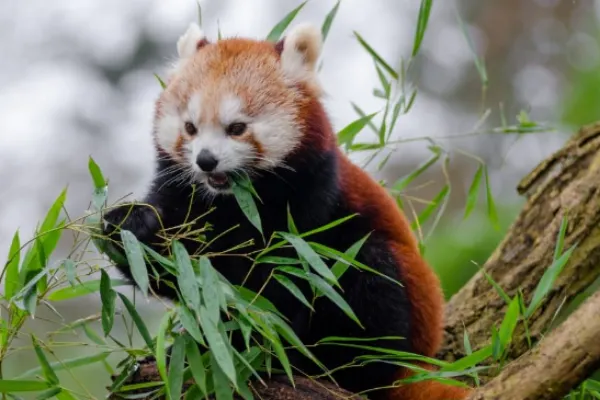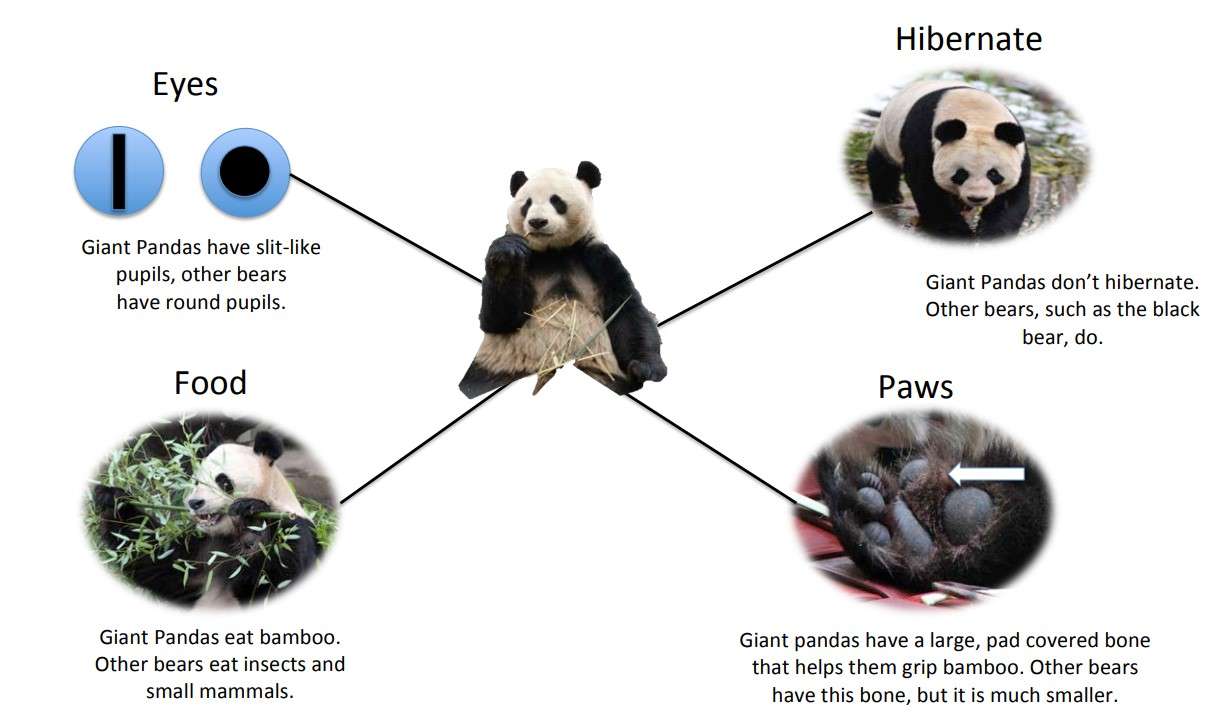Pandas are the bears of the Ursidae family. These cute bears belong to the order Carnivora, but they are basically folivores and consume 99 percent of their diet from bamboo shoots and leaves.
In many shows or channels, we have seen that pandas have white and black colored-fur on their bodies. But let me inform you that those are Giant Pandas, and apart from them, there is another type of panda too roaming in China.
They do not have beautiful black and white fur. In this article, we will discuss all the different types of Pandas are there in the world and how they are different from other bears.
All Different Types of Pandas
1) Giant Panda

Giant Pandas, scientific name Ailuropoda melanoleuca, are the most common pandas having a black-and-white coat and rotund body. They are endemic to China and rely on bamboo for their daily diet.
Giant Pandas are categorized as vulnerable species by International Union for Conservation of Nature (IUCN). They can grow up to 1.2 to 1.9 meters in body length and can weigh around 140-160 kilograms (300-350 lb).
Their basic sensing abilities are sight, hearing, and smell. Based on hearing and smell, they can be much better than most animals. And their night vision is considered to be one of the best because of their vertical slit pupils.
Giant Pandas have stronger bite force than grizzly bears, and they are only a slightest less powerful than them.
2) Qinling Panda

Qinling Pandas, scientific name Ailuropoda melanoleuca qinlingensis, are of the same subspecies as Giant Pandas but from distinct cranial measurements, color patterns, habitat, and population genetics.
They have an overall small size than pandas and light or dark brown coated fur. These pandas have a very low life span of around 5 to 20 years. In addition, they consume the same diet as Giant Pandas, i.e., bamboo.
However, they are also weaker than Giant Pandas. They are primarily found in Qinling Mountains in southern Shaanxi Province, China.
Other Species
Red Panda

Red Pandas are not from the Panda species and are commonly known as lesser pandas. They have different families, i.e., Ailuridae and are not bears and primarily look like raccoons or weasels.
They can grow up to 51–63.5 cm (20.1–25.0 in) body length and weigh between 3.2 to 15 kilograms (7.1 to 33.1 lb). Red Pandas are primarily native to the eastern Himalayas and southwestern China.
The most common thing between Giant Pandas and Red Pandas is their diet. They are both mainly dependent on bamboo for their diet. Red Pandas feed on bamboo leaves. Their average life span is around 9 to 23 years.
Even in Red pandas, there are two distinct species depending on the size and red color fur.
- Ailurus fulgens fulgens
- Ailurus fulgens styani (or Ailurus fulgens refulgens)
How Are Pandas Different From Other Bears?
Pandas are different from other bears in many ways. Below we have discussed the major differences between bears and pandas.
1) Eyes
Giant Pandas have vertical slit pupils like cats that allow them to see in the dark. In contrast, other bears have round pupils and tapetum lucidum, a thin membrane in their eyes that directly reflects even the slightest of light back to the retina.
It grants them the ability to see at night. Giant pandas don’t have tapetum lucidum in their eyes. They are primarily dependent on their slit-like pupil for night vision.
2) Food
Giant Pandas are only relying on bamboo for their food. They are folivore and consume 99 percent of their diet from bamboo shoots.
On the other hand, other bears are omnivores and eat small mammals, insects, fruits, and other varied diets, depending on their habitat. Only polar bears rely mostly on small mammals.
3) Size
Giant Pandas have a lesser body size as compared to other bears like Grizzly or Polar bears. Grizzly and Polar Bears are born predators, whereas Giant Pandas are cute and are known to be aggressive only when threatened.
Still, Pandas cannot be underestimated and possess the same danger as other bears.
4) Hibernate
Giant Pandas do not hibernate and simply move towards warmer places. They have a very good spatial memory that grants them the ability to plan a course to a location.
On the other hand, other bears like black bears and grizzly bears hibernate during winters. During hibernation, they lower their metabolism and survive through the entire winter period without eating, drinking, urinating, or defecting.
5) Bite
Giants Pandas have stronger bite force than Grizzly bears. However, among all the bears, polar bears have the strongest bite force. Despite being folivore and cute in nature, giant pandas can be dangerous enough to eliminate a human being.
6) Paws
Giant pandas have large and powerful paws covered with bone that helps them to grip bamboo tightly. At the same time, other bears have smaller size bones in their paws.

Credits: rzss.org.uk
Giant Pandas vs. Bears
| Giant Pandas | Bears |
| Giant Pandas have vertical slit pupils | Bears have round pupils |
| They don’t have tapetum lucidum in their eyes. | They have tapetum lucidum in their eyes. |
| Pandas are folivores. | Bears are omnivores. |
| Pandas do not hibernate. | Bears hibernate during winters. |
| They can clearly see at night. | They can also see in the dark. |
Here we conclude our article on “What are all different types of Pandas,” along with how they are different from other bears. We hope you like it. We will be back with another post. Till then, stay tuned with us and read the knowledgeable articles attached below.
References
- Wikipedia
- rzss.org.uk
Also Read:

Meet Abhidept (nickname Monty), the visionary founder of How It See, being an engineering student, he’s fueled by an insatiable curiosity about the world around him. He is captivated by an eclectic correlation between animal groups, science, and nature, and this fascination drives his quest for understanding.
After completing his degree, he’s set on a mission to delve deep into the realm of nature, accumulating knowledge to share with you through his writing. In the meantime, he loves to watch anime and read anime.
